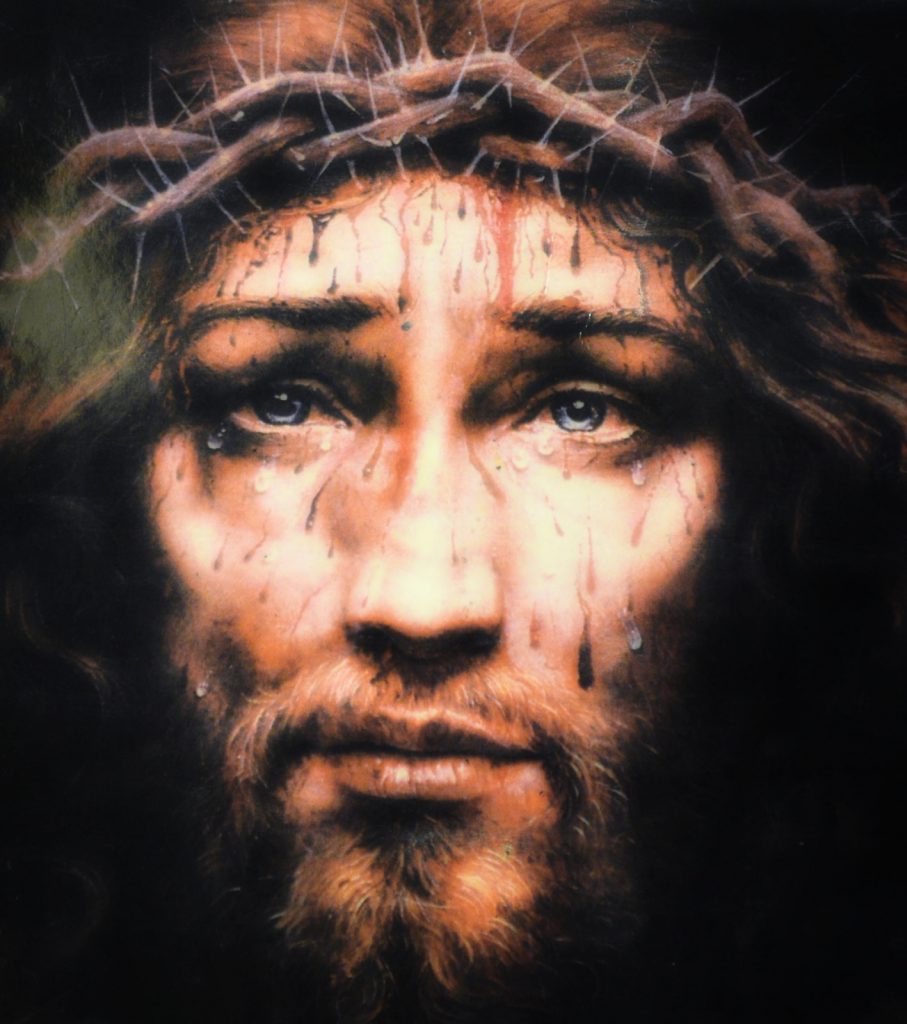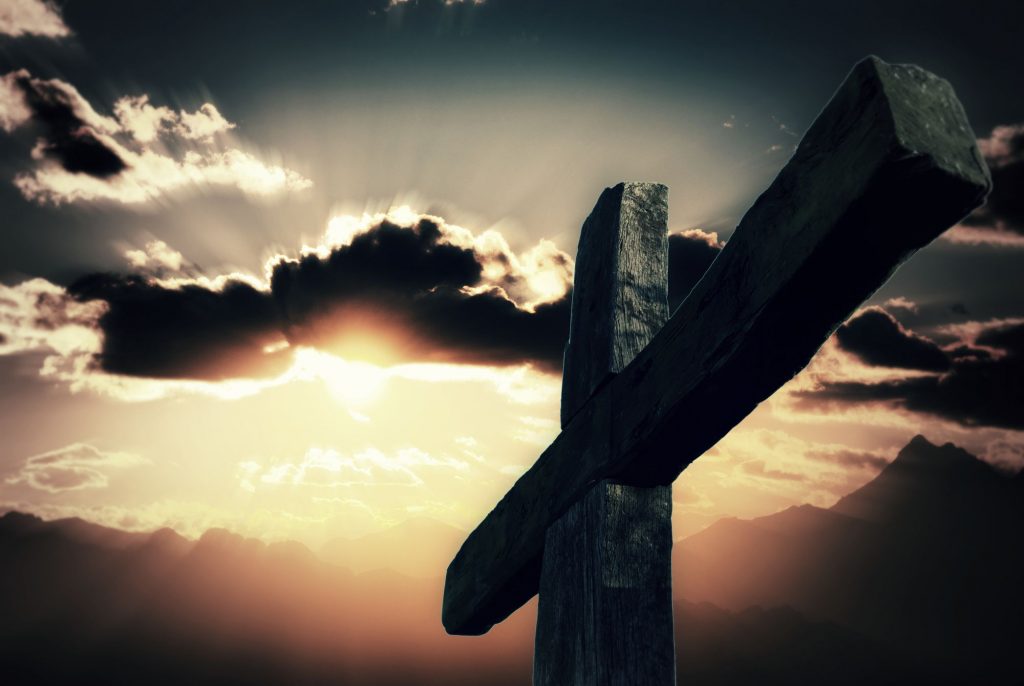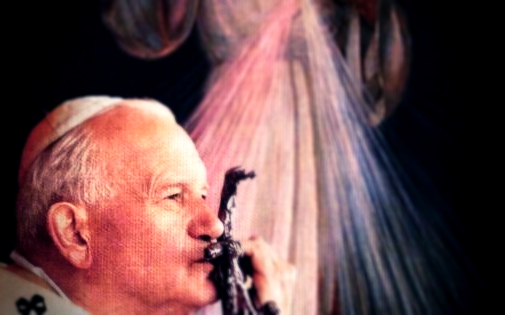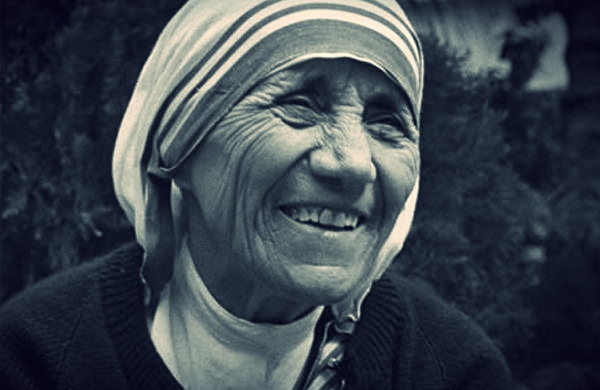
MEMORIAL OF OUR LADY OF SORROWS
“OFFER it up.” It’s the most common Catholic answer we give to others who are suffering. There is truth and reason as to why we say it, but do we really understand what we mean? Do we really know the power of suffering in Christ? Do we really “get” the Cross?
Many of us are Afraid of the Call, afraid of Going Into the Deep because we feel that Christianity is ultimately a masochistic spirituality where we forego any of the pleasures of life, and simply, suffer. But the truth is, whether you are a Christian or not, you’re going to suffer in this life. Sickness, misfortune, disappointment, death… it comes to everyone. But what Jesus actually does, through the Cross, is turn all of this into a glorious victory.
In the cross lies Love’s victory… In it, finally, lies the full truth about man, man’s true stature, his wretchedness and his grandeur, his worth and the price paid for him. —Cardinal Karol Wojtyla (ST. JOHN PAUL II) from Sign of Contradiction, 1979 p. ?
Allow me, then, to break down that sentence so that we can hopefully grasp the value and true power in embracing our suffering.
THE FULL TRUTH ABOUT MAN
I. “man’s true stature… his worth”
The first and most essential truth of the Cross is that you are loved. Someone has actually died for love of you, personally. 
Precisely by contemplating the precious blood of Christ, the sign of his self-giving love (cf. Jn 13:1), the believer learns to recognize and appreciate the almost divine dignity of every human being and can exclaim with ever renewed and grateful wonder: ‘How precious must man be in the eyes of the Creator, if he gained so great a Redeemer’ and if God ‘gave his only Son’ in order that man ‘should not perish but have eternal life’!” —ST. POPE JOHN PAUL II, Evangelium Vitae, n. 25
Our worth lies in the truth that we are made in God’s image. Each of us, body, soul, and spirit, is a reflection of the Creator Himself. This “divine dignity” is what not only triggered Satan’s envy and hatred toward the human race, but what ultimately led the Father, Son and Holy Spirit to conspire to so great an act of love for fallen humanity. As Jesus said to St. Faustina,
If My death has not convinced you of My love, what will? —Jesus to St. Faustina, Divine Mercy in My Soul, Diary, n. 580
II. “his wretchedness… and the price paid for him”
The Cross reveals not only man’s worth, but the extent of his wretchedness, that is, the seriousness of sin. Sin had two lingering effects. The first is that it destroyed the purity of our souls such that it immediately broke the capacity for spiritual communion with God, who is all-holy. Second, sin—which is a disruption of the order and laws that govern the soul and the universe—introduced death and chaos into creation. Tell me: what man or woman, to this very day, can restore the state of holiness of his or her soul on their own? Moreover, who can stop the march of death and decay that man has unleashed upon himself and universe? Only grace can do this, only the power of God.
For by grace you have been saved through faith, and this is not from you; it is the gift of God… (Eph 2:8)
Thus, when we look upon the Cross, not only do we see God’s love for us, but the cost of our rebellion. The cost is precisely because, if we are created with a “divine dignity”, then only the Divine can restore that fallen dignity.
For if by that one person’s transgression the many died, how much more did the grace of God and the gracious gift of the one person Jesus Christ overflow for the many. (Rom 5:15)
III. “his grandeur”
And now we come to the most amazing aspect of Christ’s sacrifice on the Cross: it was not only a gift to save us, but an invitation to participate in the salvation of others. Such is the grandeur of the sons and daughters of God.
The truth is that only in the mystery of the incarnate Word does the mystery of man take on light… Christ… fully reveals man to man himself and makes his supreme calling clear. —Gaudium et Spes, Vatican II, n. 22
Herein lies the “Catholic” understanding of suffering: Jesus did not eliminate it through the Cross, but showed how human  suffering becomes a pathway to eternal life and the ultimate expression of love. Nonetheless,
suffering becomes a pathway to eternal life and the ultimate expression of love. Nonetheless,
Christ achieved the Redemption completely and to the very limits but at the same time he did not bring it to a close…. it seems to be part of the very essence of Christ’s redemptive suffering that this suffering requires to be unceasingly completed. —ST. POPE JOHN PAUL II, Salvifici Doloros, n. 3, vatican.va
But how can it be completed if He has already ascended to Heaven? St. Paul answers:
I rejoice in my sufferings for your sake, and in my flesh I am filling up what is lacking in the afflictions of Christ on behalf of his body, which is the church… (Col 1:24)
For the mysteries of Jesus are not yet completely perfected and fulfilled. They are complete, indeed, in the person of Jesus, but not in us, who are his members, nor in the Church, which is his mystical body. —St. John Eudes, treatise “On the Kingdom of Jesus”, Liturgy of the Hours, Vol IV, p 559
What Jesus alone could do is merit for all mankind the graces and forgiveness that would make us capable of eternal life. But it has been given to His mystical body to, first, receive these merits through faith, and then, distribute these graces to the  world, thus becoming a “sacrament” in itself. This should change for us the meaning of “Church”.
world, thus becoming a “sacrament” in itself. This should change for us the meaning of “Church”.
The body of Christ is not merely a collection of Christians. It is a living instrument of redemption—an extension of Jesus Christ throughout time and space. He continues His salvific work through each member of His body. When a person understands this, he sees that the idea of “offering it up” is not just a theological reply to the question of human suffering, but rather a calling to participate in the salvation of the world. —Jason Evert, author, Saint John Paul the Great, His Five Loves; p. 177
As sacrament, the Church is Christ’s instrument. “She is taken up by him also as the instrument for the salvation of all,” “the universal sacrament of salvation,” by which Christ is “at once manifesting and actualizing the mystery of God’s love for men.” —Catechism of the Catholic Church, n. 776
So you see, this is why Satan scares us into fleeing from the Garden of Gethsemane and even the mere shadow of the Cross… from suffering. Because he knows “the full truth about man”: that we are (potentially) not just mere observers of the Passion, but actual participants, insofar as we accept and unite our sufferings to Jesus Christ as members of His mystical body. Thus, Satan is terrified of the man or woman who understands, and then lives this reality! For…
…the weaknesses of all human sufferings are capable of being infused with the same power of God manifested in Christ’s Cross… so that every form of suffering, given fresh life by the power of this Cross, should become no longer the weakness of man but the power of God. —ST. JOHN PAUL II, Salvifici Doloros, n. 23, 26
We are afflicted in every way… carrying about in the body the dying of Jesus, so that the life of Jesus may also be manifested in our body. (2 Cor 4:8, 10)
THE DOUBLE-EDGED SWORD
Suffering, then, has two aspects. One is to draw the merits of Christ’s Passion, Death, and Resurrection into our own lives through abandonment to God’s will, and second, to draw these merits upon others. On the one hand, to sanctify our own souls, and second, to draw graces for the salvation of others.
It is suffering, more than anything else, which clears the way for the grace which transforms human souls. —ST. JOHN PAUL II, Salvifici Doloros, n. 27
If “by grace you have been saved through faith,” [1]Eph 2:8 then faith in action is embracing your daily crosses (which is called “love of God and neighbour”). These daily crosses constitute the means by which the “old self” is put to death by the sword-edge of renunciation so that the “new self”, that true image of God in whom we are created, may be restored. As Peter said, “Put to death in the flesh, he was brought to life in the spirit.” (1 Pet 3:18) That is the pattern, then, for us too.
crosses constitute the means by which the “old self” is put to death by the sword-edge of renunciation so that the “new self”, that true image of God in whom we are created, may be restored. As Peter said, “Put to death in the flesh, he was brought to life in the spirit.” (1 Pet 3:18) That is the pattern, then, for us too.
Put to death, then, the parts of you that are earthly: immorality, impurity, passion, evil desire, and the greed that is idolatry… Stop lying to one another, since you have taken off the old self with its practices and have put on the new self, which is being renewed, for knowledge, in the image of its creator. (Col 3:5-10)
Therefore, since Christ suffered in the flesh, arm yourselves also with the same attitude… (1 Pet 3:1)
The other edge of the sword is that, when we choose the path of love rather than war with others, the path of virtue rather than vice, the assent to sickness and misfortunes rather than dissent from God’s permissive will… we can “offer up” or embrace for others the sacrifice and pain that these sufferings bring. Thus, accepting sickness, exercising patience, denying indulgence, rejecting temptation, enduring dryness, holding one’s tongue, accepting weakness, asking for forgiveness, embracing humiliation, and above all, serving others before oneself… are the daily crosses that serve to “fill up what is lacking in the sufferings of Christ.” In this way, not only does the grain of wheat—the “I”—die, so as to bear the fruit of holiness, but “you can obtain much from Jesus Christ for those who may not need physical help, but who often are in terrible need of spiritual help.” [2]Cardinal Karol Wojtyla, as cited in Saint John Paul the Great, His Five Loves by Jason Evert; p. 177
Suffering “offered up” also helps those who otherwise may not seek grace.
JOYS OF THE CROSS
Last, a discussion of the Cross would utterly fail if it did not include the truth that it always leads to Resurrection, that is, to joy. That is the paradox of the Cross.
For the sake of the joy that lay before him he endured the cross, despising its shame, and has taken his seat at the right of the throne of God… At the time, all discipline seems a cause not for joy but for pain, yet later it brings the peaceful fruit of righteousness to those who are trained by it. (Heb 12:2, 11)
This is the “secret” of the Christian life that Satan wants to hide or obscure from Christ’s followers. It is the lie that suffering is an injustice that only leads to the deprivation of joy. Rather, suffering embraced has the effect of purifying  the heart and making it capable of receiving joy. Thus, when Jesus says “follow me”, He ultimately means to obey His commandments, which involves a real death to self so as to follow Him to and through Calvary, so that your “joy may be complete.” [3]cf. John 15:11
the heart and making it capable of receiving joy. Thus, when Jesus says “follow me”, He ultimately means to obey His commandments, which involves a real death to self so as to follow Him to and through Calvary, so that your “joy may be complete.” [3]cf. John 15:11
Observance of the commandments…. means conquering sin, moral evil in its various guises. And this leads to a gradual inner purification…. With the passage of time, if we persevere in following Christ our Teacher, we feel less and less burdened by the struggle against sin, and we enjoy more and more the divine light which pervades all creation. —ST. JOHN PAUL II, Memory and Identity, pp. 28-29
“The way” to the joys of eternal life, which begin even here on earth, is the way of the Cross.
You will show me the path to life, abounding joy in your presence… (Psalm 16:11)
On this Memorial of Our Lady of Sorrows, let us turn to her who is “the image of the Church to come.” [4]POPE BENEDICT XVI, Spe Salvi,n.50 It was there, in the shadow of the Cross, that a sword pierced her heart. And from that heart “full of  grace” that willingly united its sufferings to her Son’s, she became in herself the mediatrix of grace. [5]cf. “This motherhood of Mary in the order of grace continues uninterruptedly from the consent which she loyally gave at the Annunciation and which she sustained without wavering beneath the cross, until the eternal fulfillment of all the elect. Taken up to heaven she did not lay aside this saving office but by her manifold intercession continues to bring us the gifts of eternal salvation. . . . Therefore the Blessed Virgin is invoked in the Church under the titles of Advocate, Helper, Benefactress, and Mediatrix.” (CCC, n. 969 n) She became, by Christ’s command, the Mother of all peoples. Now we by our baptism, who have been given “every spiritual blessing in the heavens,” [6]Eph 1:3 are called to allow the sword of suffering to pierce our own hearts so that, like Mother Mary, we will also become participants in the redemption of humanity with Christ our Lord. For…
grace” that willingly united its sufferings to her Son’s, she became in herself the mediatrix of grace. [5]cf. “This motherhood of Mary in the order of grace continues uninterruptedly from the consent which she loyally gave at the Annunciation and which she sustained without wavering beneath the cross, until the eternal fulfillment of all the elect. Taken up to heaven she did not lay aside this saving office but by her manifold intercession continues to bring us the gifts of eternal salvation. . . . Therefore the Blessed Virgin is invoked in the Church under the titles of Advocate, Helper, Benefactress, and Mediatrix.” (CCC, n. 969 n) She became, by Christ’s command, the Mother of all peoples. Now we by our baptism, who have been given “every spiritual blessing in the heavens,” [6]Eph 1:3 are called to allow the sword of suffering to pierce our own hearts so that, like Mother Mary, we will also become participants in the redemption of humanity with Christ our Lord. For…
It is this suffering which burns and consumes evil with the flame of love and draws forth even from sin a great flowering of good. All human suffering, all pain, all infirmity contains within itself a promise of salvation, a promise of joy: “I am now rejoicing in my suffering for your sake,” writes St. Paul (Col 1:24).—ST. JOHN PAUL II, Memory and Identity, pp. 167-168
RELATED READING
Bless you and thank you for
supporting this ministry.
To journey with Mark in the The Now Word,
click on the banner below to subscribe.
Your email will not be shared with anyone.
Footnotes
| ↑1 | Eph 2:8 |
|---|---|
| ↑2 | Cardinal Karol Wojtyla, as cited in Saint John Paul the Great, His Five Loves by Jason Evert; p. 177 |
| ↑3 | cf. John 15:11 |
| ↑4 | POPE BENEDICT XVI, Spe Salvi,n.50 |
| ↑5 | cf. “This motherhood of Mary in the order of grace continues uninterruptedly from the consent which she loyally gave at the Annunciation and which she sustained without wavering beneath the cross, until the eternal fulfillment of all the elect. Taken up to heaven she did not lay aside this saving office but by her manifold intercession continues to bring us the gifts of eternal salvation. . . . Therefore the Blessed Virgin is invoked in the Church under the titles of Advocate, Helper, Benefactress, and Mediatrix.” (CCC, n. 969 n) |
| ↑6 | Eph 1:3 |


